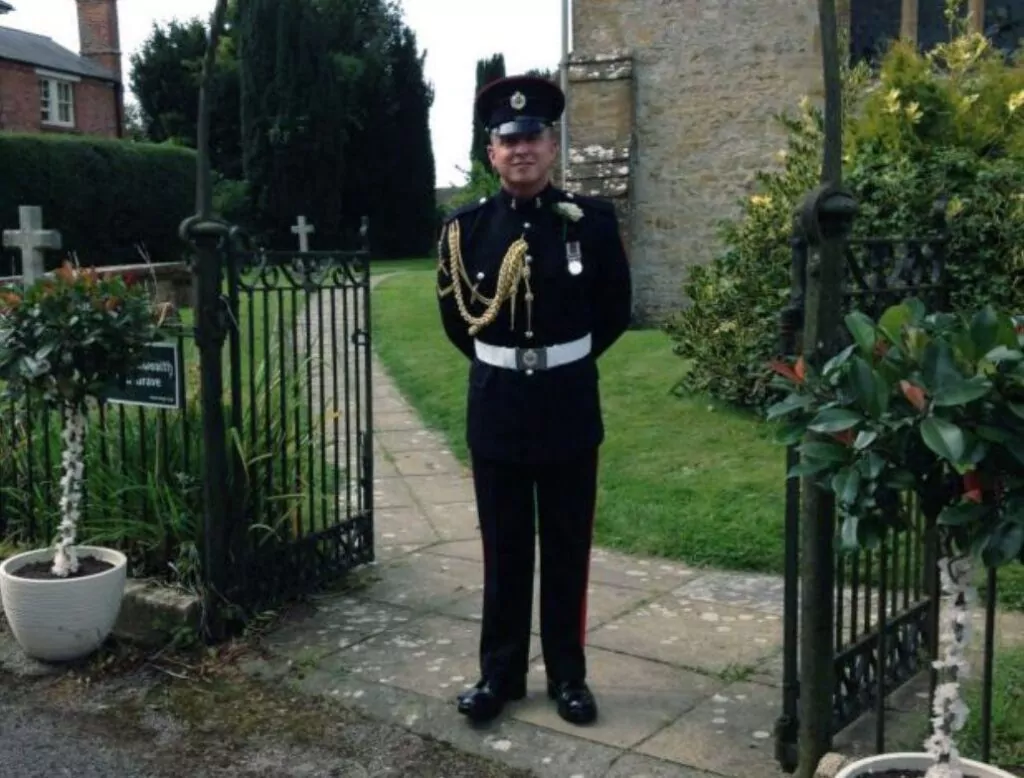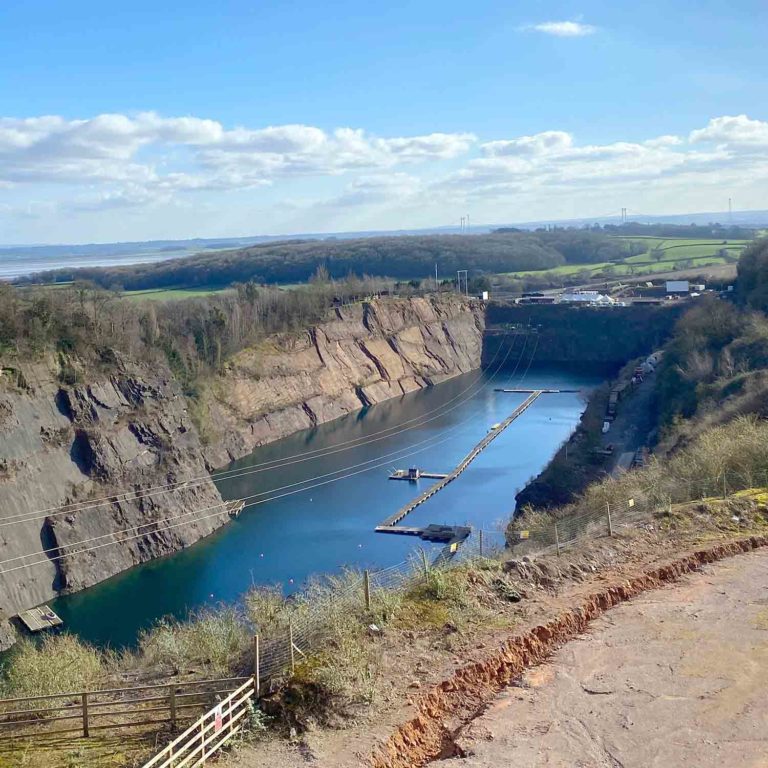Earlier on the day of the dive on which Lance-Corporal George Partridge died at the NDAC inland dive site four years ago, the soldier had played the role of a “stricken” unconscious diver with his buddy as rescuer during an emergency drill.
The poignant detail formed part of evidence heard at the jury inquest into LCpl Partridge’s death at Gloucester Coroner’s Court this week from 27 June.
Delivering a detailed “narrative verdict” rather than the standard brief summary, assistant coroner Roland Wooderson pointed to “significant points of failure” both in the Army diving course the soldier was undertaking and in the training of his dive supervisor.
At the original pre-inquest review LCpl Partridge’s death had been blamed on “systematic failures”. A subsequent Royal Navy service inquiry panel had published a comprehensive report stating that the soldier had been using faulty diving equipment. Criticising the Army course, that report had made 53 recommendations on remedial action.
Divernet reported in 2019 that a civilian jury would attend the inquest, and a year later that the Ministry of Defence (MoD) had been heavily censured over the fatality by the Health & Safety Executive (HSE), which is responsible for investigating deaths in the workplace.
Now the inquest jury, concluding that the soldier’s death had been caused by lack of air, has found that the risk assessment for the training course was inadequate and highlighted seven other points of concern.
LCpl Partridge, 27, from Yeovil, had been serving with 26 Engineer Regiment in Perham Down, Wiltshire. He had been in the Army for eight years, including a 2012 tour of duty in Afghanistan, and was married, expecting his first child and set to be promoted to corporal.
The jury heard that while he had been rated by instructors as top student in his group, there had also been doubts about his endurance. Five separate medical episodes had occurred during various endurance exercises, but these had not been flagged up as forming a significant pattern.
A post mortem examination had revealed that he had a previously undiagnosed minor anomaly in his right coronary artery, and ”sudden cardiac death syndrome” had originally been given as cause of death.
Dive skipped
On the day he died, Monday, 26 March, 2018, LCpl Partridge was into the last week of a five-week Army Advanced Diving 2 course at the now-closed Gloucestershire inland site, along with 11 other trainee divers.
The students had been expecting to carry out their scheduled 19th dive to a depth of 21-23m, but in a decision that would be questioned by the jury it was decided to skip this and proceed straight to dive 20, descending to the deeper of two Wessex helicopters at 26-27m.
The divers were told to take a 53m distance line down and run it between shotline and wreck. The jury would hear that the line was three times longer than it should have been, introducing an unnecessary risk of entanglement.
Equipped with primary and back-up air cylinders and equipped with a full-face mask with radio communications system, LCpl Partridge descended on a line with dive-buddy Cpl Stephen Hart. Their task was expected to take no more than 10 minutes.
Dive supervisor Staff Sgt Justin Dolly and a number of other witnesses told the court that the comms system was so unreliable that rope signals were normally used. The comms had not worked for either diver during the incident, either between themselves or with their surface attendants.
Sgt Dolly had seen two sets of bubbles and it had appeared to him at one stage that the pair were working to disentangle a line. After 10 minutes rope signals sent telling both men to surface had elicited no responses, he said.
Soldier Thomas Moore, communications officer for the dive, told the jury that LCpl Partridge had sent two rope signals during his dive to request more slack on the line.

Able Seaman Diver Gareth Rowley of the support staff said that LCpl Partridge had reached the helicopter and sent the rope signal “found, started and finished work” but nothing after that. After Cpl Hart had surfaced, ASD Rowley had been concerned to see a continuous stream of bubbles suggesting a freeflow before they had stopped.
Cpl Hart told the jury that the distance-line the divers were carrying had become entangled on their descent but, unable to hear each other on the comms system, they had used hand signals to arrange that he would hold the line and feed it to LCpl Partridge as he swam towards the helicopter.
Cpl Hart had lost sight of his buddy as he passed between two large rocks, and then obeyed a rope signal instructing him to ascend.
Standby diver Cpl Michael Watson was dispatched to see what had happened to L/Cpl Partridge and told the jury he had found him lying on his back at a depth of about 24m. His mask, still attached to the hose, was hanging off his face. He had brought the unconscious diver to the surface in less than a minute, 17 minutes after the start of the dive. Calls had already gone out to the emergency services and for on-site assistance.
Both of LCpl Partridge’s cylinders were found to be empty. ASD Rowley was one of several witnesses who said that trainees had been warned to check the switch blocks that regulated air flow from their cylinders into their masks every few minutes, because a knock could cause both cylinders to start flowing at once, with the diver unaware that this was happening. They were also told to check their air gauges every 10 minutes – an interval the jury considered too long.
In the drill before the dive in which LCpl Partridge had played the casualty with Cpl Hart his rescuer, ASD Rowley recalled that the former’s switch block had been checked and found to be closed.
More interesting
During the hearing, Eliot Woolf QC, representing LCpl Partridge’s family, had asked whether the dive-time previously amassed by the students at depths greater than 10m had equipped them for the helicopter dive. Sgt Dolly had agreed that more medium-range depth training might have helped them.
Asked why dive 19 had been skipped, Sgt Dolly told the inquest jury that the trainees had carried out two deeper dives the previous week, including one to a depth of 30m in the Solent. With little for the divers to see on these dives, the helicopter exercise had been considered more interesting for them.
It was unclear whether missing the step in training had been authorised by a senior officer. Sgt Dolly thought he had made a call but the officer in question had no recollection and no phone record was available. The sergeant rejected a suggestion that there had been pressure to end the course early because of an upcoming bank holiday, saying that it would have continued regardless.
The jury highlighted among the failings the change in the dive programme made without permission, and the fact that neither Sgt Dolly nor the trainees had been taught how to carry out the air-endurance calculations that would have indicated how much faster air would run out on a deep, task-loaded dive.
The use of such tables was introduced to Army diver training soon after LCpl Partridge’s death.
Concerned about the radio communications breakdown, the jury also wanted to know why the Digicom 1 system, introduced for Army divers in 2002 and intended for use for up to 15 years, had still been in use at the time of the fatality. Navy diving life support manager Ian Taylor said that this was because it remained market leader and was “basically the best out there”. Digicom 4 had now replaced 1, he said.
The two Crown Censures issued earlier by the HSE formally recorded that the MoD had failed to comply with health & safety legislation, and would likely have been convicted if it did not have Crown immunity. This was the maximum sanction the HSE could impose on the department but, by accepting the censures, it had already admitted its breach of duty.
The HSE had also served two Crown Improvement Notices, relating to failure to train all Army divers in how to calculate air endurance, and failure to assess the risk of a diver running out of air.

